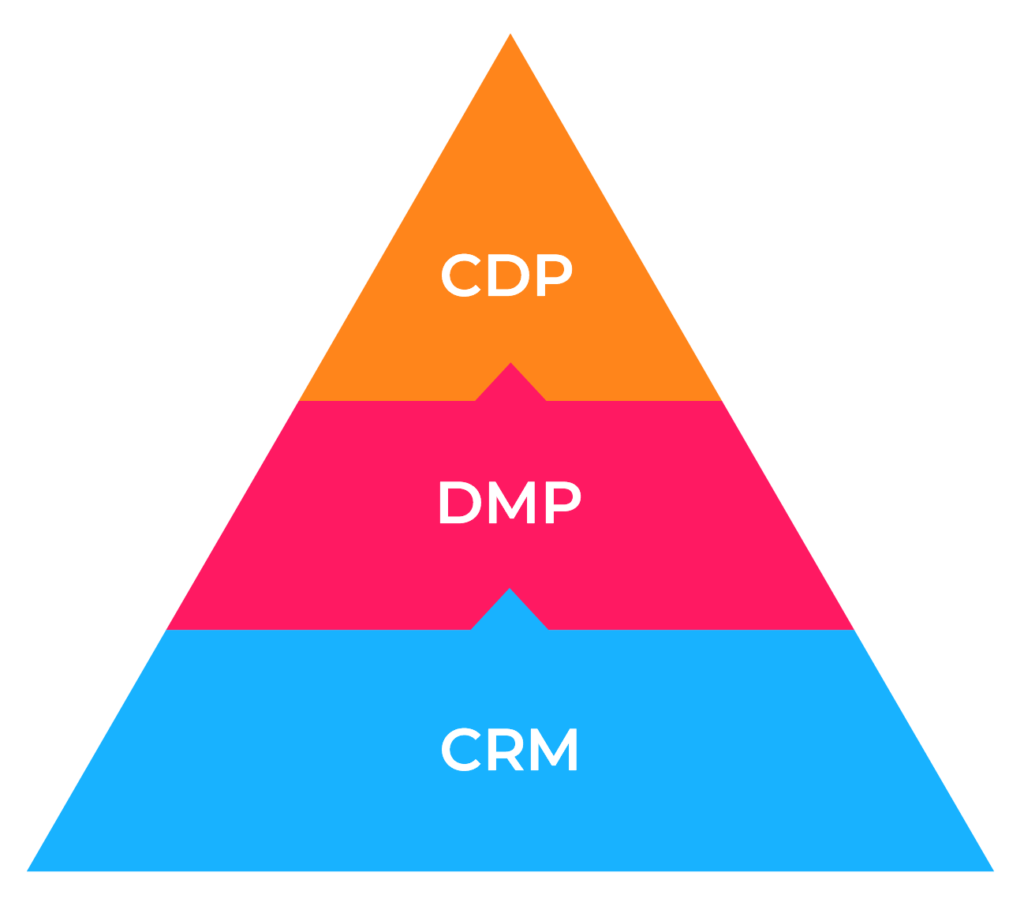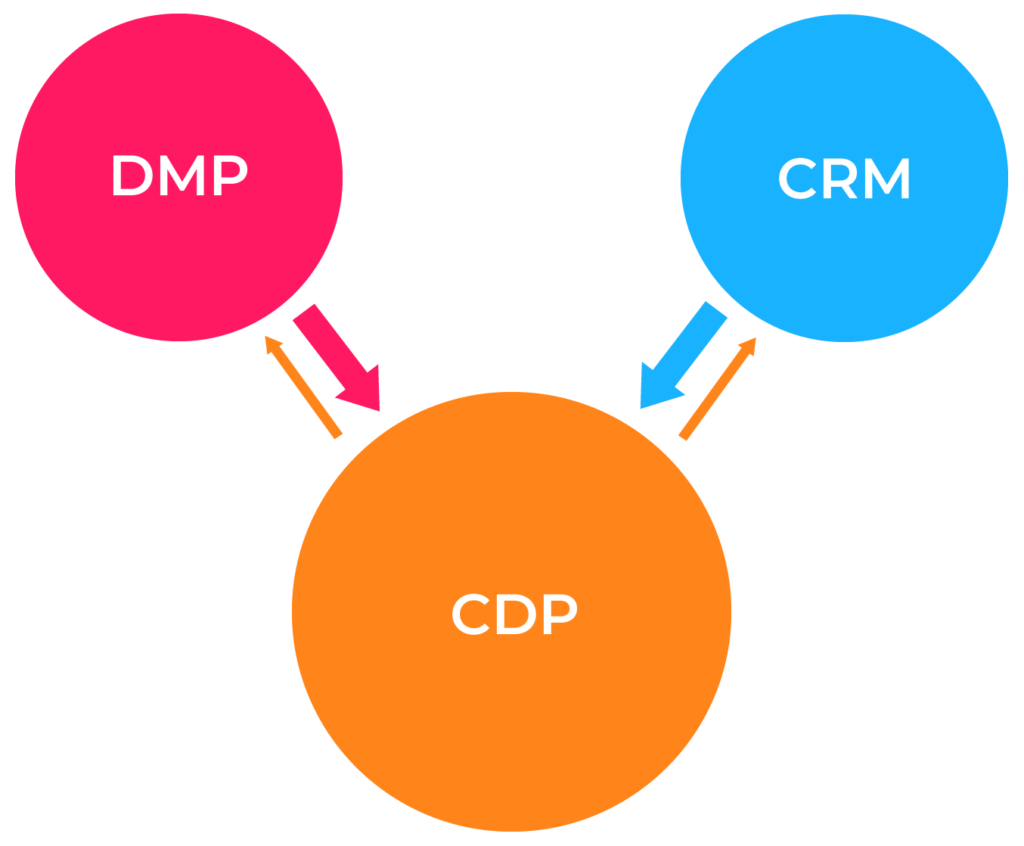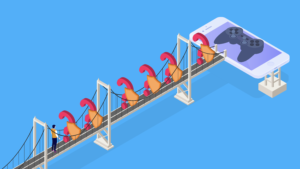Author: Steffen Meyer, Mobile Marketing Content Specialist
To be successful in the app market, you have to know how to handle your data. Extracting insights from all these numbers will significantly improve your strategies to attract and retain customers.
There are various systems you can employ to do so, and you should understand their differences. Most commonly, these three count as the most important ones:
- Customer Data Platforms (CDP)
- Data Management Platform (DMP)
- Customer Relationship Management (CRM)
To get a first grasp on how they differ, look at this pyramid:

The CRM is situated at the basis because it mostly deals with people who already downloaded and use your app. By engaging with users, you avoid user churn and raise loyalty. A CRM with a well thought out retention strategy builds the foundation of your app’s success.
With a DMP, you manage lots of anonymized data, mostly from second or third parties, meaning other companies or ad networks like Instagram or Google Ads. Advertisers use this data to promote your app to gain new users which are then handled by the CRM.
At the top of it all sits the CDP which basically builds upon the data from DMP and CRM and is kind of a mix of these two. Via machine learning and artificial intelligence, a CDP merges data from various sources and creates very granular user profiles which marketers can use to target prospects and customers. Think of the pointy tip of the pyramid as a symbol for this pinpoint method.
However, other than what the diagram may suggest, you don’t necessarily need a CRM before you can use a DMP, and you can have a CDP without relying on a CRM or DMP. There are overlapping features and depending on the provider you choose, you can get a hybrid of all these systems.
Look at it from this perspective:

Here, the CDP acts more like a bridge between the DMP and the CRM, which makes sense as well, since a CDP’s main task is to gather data from various sources to create single customer profiles. This allows marketers – among other things – to highly personalize their messaging.
In contrast to a DMP though, a CDP mainly uses first-party data acquired by the company to create granular profiles. A DMP mainly relies on second- or third-party data to target broad audiences.
The CRM uses first-party data as the CDP does but differs from the other two, since it uses this data to stay in contact with existing customers, not to get new ones.
A similar but still different way to look at the relationship between the three system, is this:

In this diagram, the CDP doesn’t act as a bridge but more of a data collector. While it is true that data may flow from the CDP to other systems, it is mostly the CDP that grabs all the information from online and offline sources, combines them and makes sense of them.
This depiction is close to the CDP’s origins. DMPs, CRMs and other systems have been around for quite some time, creating data silos which couldn’t interact with each other.
Then the CDP got on the stage to unify this data jumble and – with the help of machine learning and artificial intelligence – make good use of it.
Different systems, different views
There’s not one right way to illustrate the relationship between these three because they are all complex systems on their own. However, with these diagrams in mind, you are able to distinguish them broadly. For a deep dive, have a chat with our consultants who are experts in all of these systems.
💡 Knowledge sharing is at the core of what we do. Get our Marketing Master Map, sign up for our newsletter and become part of our community on LinkedIn to learn how to make apps succeed in the competitive mobile landscape.
Helpful Links:




